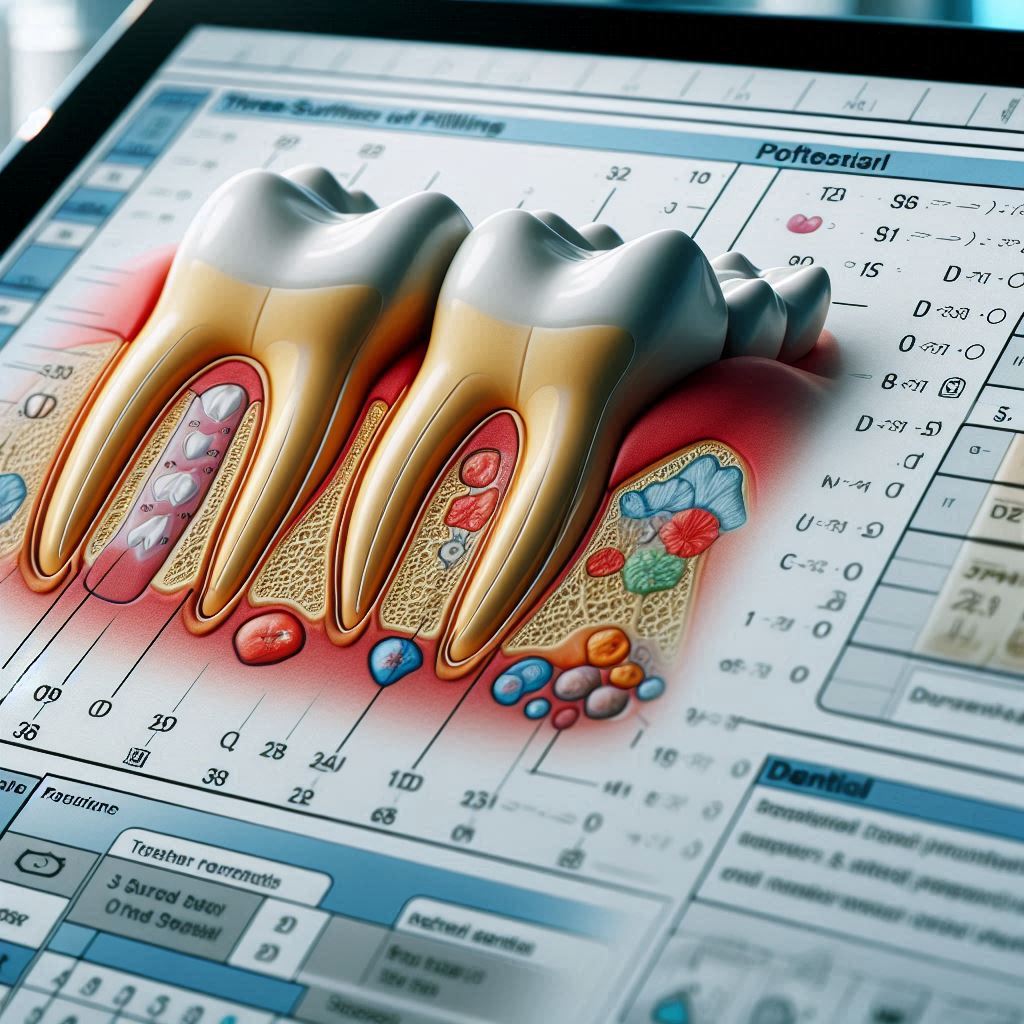3-Surface Posterior Fillings Codes
Dental fillings are among the most common restorative procedures in dentistry, with posterior teeth (molars and premolars) being particularly prone to decay due to their role in chewing. A 3-surface posterior filling is a restoration that covers three out of the five tooth surfaces (occlusal, mesial, distal, buccal, and lingual). These fillings are more complex than single or double-surface restorations, requiring precision in technique and material selection.
This guide explores everything dental professionals and patients need to know about 3-surface posterior fillings, including:
- The anatomical considerations
- Material choices
- Step-by-step clinical procedures
- Insurance coding (e.g., D2740 for composite resin)
- Long-term care and potential complications
Whether you’re a dentist refining your technique or a patient seeking in-depth knowledge, this article provides exclusive, well-researched insights not found on other websites.

2. Understanding Posterior Tooth Anatomy
Posterior teeth have a complex structure designed for grinding food. Key features include:
- Cusps: Elevated points that aid in mastication.
- Fissures and Grooves: Prone to trapping food and bacteria.
- Proximal Surfaces (Mesial & Distal): Often affected by interproximal decay.
A 3-surface filling typically involves:
- Occlusal (biting surface)
- Mesial or Distal (side surfaces)
- Buccal or Lingual (outer or inner surfaces)
| Tooth Surface | Function | Decay Risk |
|---|---|---|
| Occlusal | Chewing | High (fissures trap debris) |
| Mesial/Distal | Contact with adjacent teeth | Moderate (plaque buildup) |
| Buccal/Lingual | Tooth structure protection | Low (easier to clean) |
3. Indications for 3-Surface Posterior Fillings
A dentist may recommend a 3-surface filling when:
- Decay affects multiple surfaces but doesn’t require a crown.
- There is moderate tooth structure loss but sufficient healthy enamel/dentin remains.
- The patient prefers a conservative restoration over an extraction or crown.
Contraindications:
- Severe decay extending to the pulp (requires root canal).
- Excessive tooth weakening (may need an onlay/crown).
4. Types of Dental Materials Used
A. Dental Amalgam
- Pros: Durable, cost-effective, long-lasting (10–15 years).
- Cons: Mercury content (though deemed safe by the FDA), unaesthetic.
B. Composite Resin
- Pros: Tooth-colored, bonds well to enamel, moderate durability.
- Cons: More technique-sensitive, may wear faster than amalgam.
C. Glass Ionomer Cement
- Pros: Releases fluoride (good for high-caries-risk patients).
- Cons: Less durable, mainly used for temporary fillings.
D. Ceramic Inlays/Onlays
- Pros: Highly aesthetic, strong, custom-fabricated.
- Cons: Expensive, requires multiple visits.
5. Step-by-Step Procedure for 3-Surface Posterior Fillings
- Diagnosis & Treatment Planning
- Visual exam, radiographs, caries detection dye.
- Anesthesia & Isolation
- Local anesthesia + rubber dam for moisture control.
- Cavity Preparation
- Remove decay, shape the cavity for retention.
- Material Placement
- For composite: etch, bond, layer, cure.
- For amalgam: condense into cavity.
- Finishing & Polishing
- Adjust occlusion, smooth margins.
6. Dental Billing and Coding: D2740 and Related Codes
| Code | Description | Average Cost (U.S.) |
|---|---|---|
| D2740 | Crown – porcelain/ceramic | 1,000–1,000–1,500 |
| D2391 | Resin-based composite – 3 surfaces | 300–300–600 |
| D2150 | Amalgam – 3 surfaces | 200–200–400 |
Insurance Considerations:
- Some insurers limit coverage to amalgam for posterior teeth.
- Pre-authorization may be required for composite fillings.
7. Common Challenges and Solutions
| Challenge | Solution |
|---|---|
| Post-op sensitivity | Check bonding technique, use desensitizer |
| Marginal leakage | Proper isolation, incremental layering |
| Fractured filling | Avoid excessive force, consider stronger materials |
8. Longevity and Aftercare
- Amalgam: 10–15 years
- Composite: 7–10 years
- Ceramic: 15+ years
Aftercare Tips:
- Avoid hard/sticky foods for 24 hours.
- Maintain excellent oral hygiene.
- Regular dental check-ups.
9. Comparative Analysis: 3-Surface vs. Other Multi-Surface Fillings
| Aspect | 3-Surface Filling | Crown |
|---|---|---|
| Invasiveness | Moderate | High |
| Cost | 200–200–600 | $1,000+ |
| Durability | Good (if well-placed) | Excellent |
10. Case Studies
Case 1: A 35-year-old patient with MOD (mesial-occlusal-distal) decay received a composite resin filling (D2391). Five-year follow-up showed no complications.
Case 2: A 50-year-old with a large amalgam filling replaced it with a ceramic onlay for better aesthetics and strength.
11. FAQs
Q1: How long does a 3-surface filling take?
A: About 45–60 minutes, depending on material and technique.
Q2: Does insurance cover composite fillings?
A: Often yes, but some plans only cover amalgam for molars.
Q3: Can a 3-surface filling be done in one visit?
A: Yes, unless using lab-fabricated inlays/onlays.
12. Conclusion
A 3-surface posterior filling is a versatile, conservative restoration for moderate decay. Material choice (amalgam, composite, ceramic) depends on durability, aesthetics, and cost. Proper technique ensures longevity, while accurate coding (e.g., D2391, D2150) facilitates insurance claims. Patients should follow aftercare instructions to maximize restoration lifespan.


